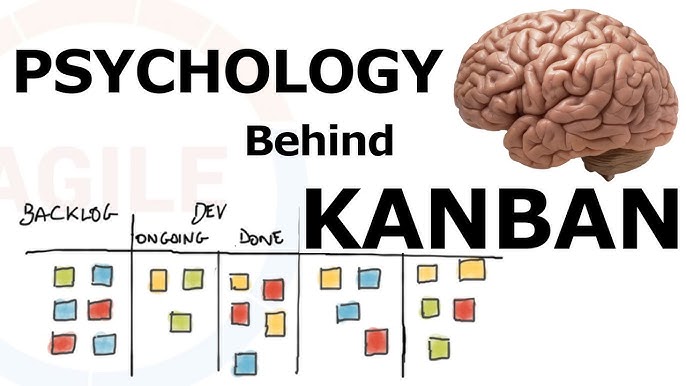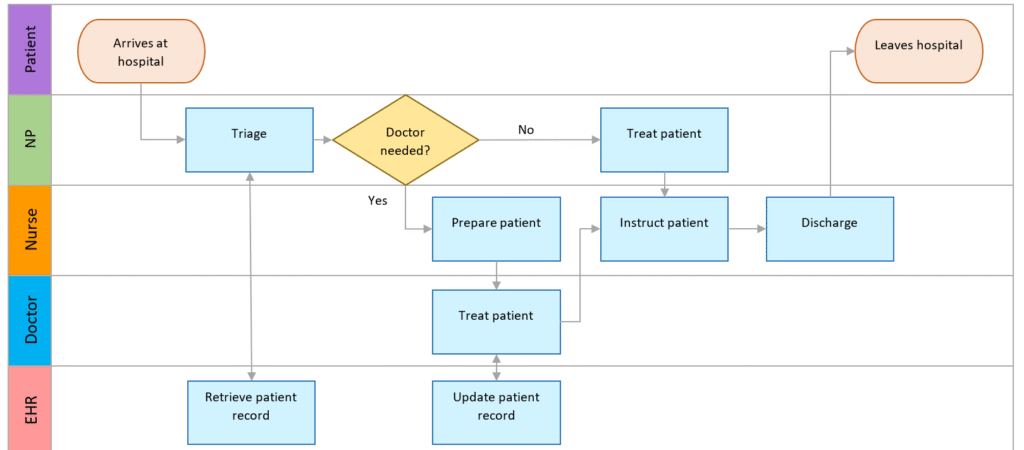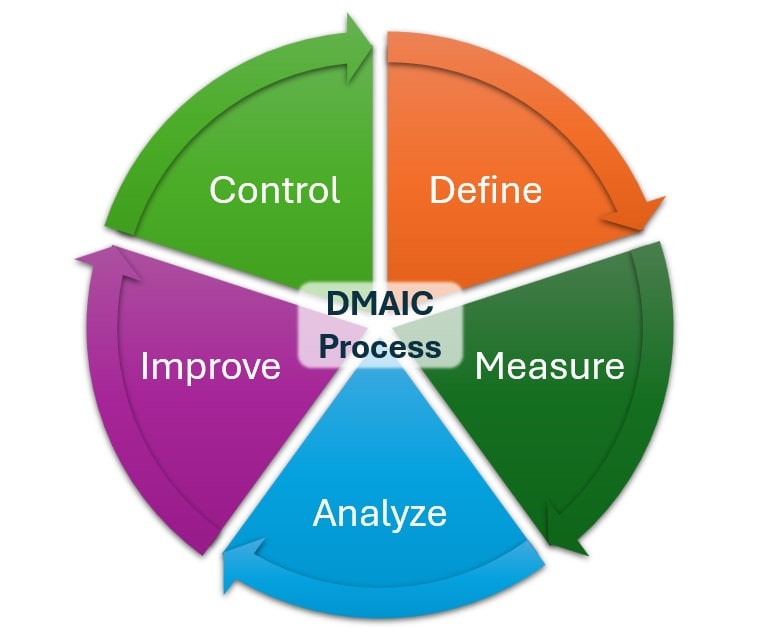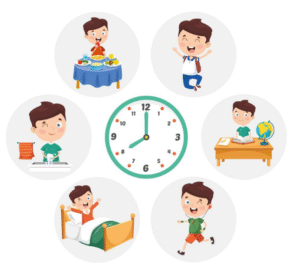
Kanban for Beginners: Simple Productivity That Works

What is Kanban? A Deep Dive
Kanban is a visual work management system that helps you see, organize, and control the flow of your tasks. The word comes from Japan, where Toyota first used it in their car factories in the 1940s. “Kan” means “visual” and “ban” means “card” or “sign.”
Think of Kanban like a traffic light system for your work. Just as traffic lights control the flow of cars to prevent accidents and traffic jams, Kanban controls the flow of your tasks to prevent you from getting overwhelmed and to help you finish things faster.
The basic idea is simple: you have a board (physical or digital) with columns that represent different stages of work. Each task is written on a card that moves from column to column as the work progresses. This gives you a clear picture of what’s happening with all your work at any given moment.
The History and Science Behind Kanban
Where It All Started
Toyota created Kanban to solve a problem: how to make cars efficiently without wasting materials or time. They noticed that supermarkets only restocked shelves when items were running low, not before. This “pull” system meant they only made what was needed, when it was needed.
Why Our Brains Love Kanban

Scientists have discovered that our brains work better when we can see our progress. This is called the “progress principle.” When you move a card from “To Do” to “Done,” your brain releases a small amount of dopamine, a chemical that makes you feel good and motivates you to keep working.
Kanban also helps with something called “cognitive load” – the amount of mental effort you’re using. When you can see all your work laid out clearly, your brain doesn’t have to work as hard to remember what you need to do next.
How Kanban Works: The Complete System
The Basic Board Structure
Every Kanban board has at least three columns, but let’s understand what each one really means:
To Do (Backlog) This is your waiting room for tasks. Everything that needs to be done eventually goes here first. Think of it like a restaurant’s order queue – orders come in, but the kitchen can only handle so many at once.
In Progress (Work in Progress or WIP) This is where the actual work happens. It’s like the kitchen in our restaurant example – this is where orders are being actively prepared. The key rule: limit how many things can be here at once.
Done (Completed) This is your victory column. Tasks that are 100% finished go here. It’s like the restaurant’s pickup counter – meals that are ready to be served.
Advanced Board Structures
As you get more comfortable with Kanban, you might want to add more columns:
Waiting/Blocked For tasks that are stuck waiting for someone else. Maybe you’re waiting for approval, information, or resources.
Review/Testing For work that’s finished but needs to be checked before it’s truly done.
Ready to Deploy/Deliver For completed work that’s ready to be shared or implemented.
The Core Principles of Kanban (Explained Simply)
Principle 1: Visualize Your Work
Instead of keeping your to-do list in your head or buried in a notebook, put everything where you can see it. This is like turning on the lights in a dark room – suddenly you can see everything clearly.
Why this works: Your brain can process visual information much faster than text. When you see your work laid out visually, you can quickly understand what needs attention.
Principle 2: Limit Work in Progress
This is the most important rule. Don’t try to do everything at once. Set a maximum number of tasks that can be “In Progress” at the same time.
Example: If you decide your limit is 3 tasks in progress, you can’t start a 4th task until you finish one of the first three.
Why this works: Multitasking is actually “task switching,” and every time you switch, you lose time and focus. By limiting your work in progress, you finish things faster and with higher quality.
Principle 3: Manage Flow
Pay attention to how work moves through your system. If tasks are piling up in one column, that’s a sign of a problem that needs fixing.
Example: If you have 20 tasks in “To Do” but nothing in “In Progress,” you might not be starting enough new work. If you have 10 tasks stuck in “Review,” maybe you need to spend more time on that stage.
Principle 4: Make Rules Clear
Everyone using the board should understand what each column means and when to move cards.
Example: A card can only move to “Done” when it’s 100% complete, tested, and delivered. Not 90% done or “almost finished.”
Principle 5: Improve Continuously
Regularly look at your board and ask: “How can we make this work better?” This might mean changing your columns, adjusting your work limits, or improving your process.
Setting Up Your First Kanban Board: Step-by-Step
Step 1: Choose Your Platform
Physical Board:
- Materials needed: Whiteboard or large piece of paper, sticky notes, markers
- Best for: Teams working in the same location, people who like tactile experiences
- Pros: Easy to set up, no technology needed, very visible
- Cons: Can’t access remotely, limited space, sticky notes fall off
Digital Board:
- Popular tools: Trello (beginner-friendly), Asana (feature-rich), Monday.com (advanced), or even Excel
- Best for: Remote teams, people who work on computers, integration with other tools
- Pros: Accessible anywhere, automatic backups, can add details and files to cards
- Cons: Might be less visible, requires device to update
Step 2: Design Your Columns
Start with three columns, but think carefully about what each means for your specific work:
For Personal Tasks:
- To Do → Doing Today → Done
For Work Projects:
- Requested → In Development → Review → Completed
For Content Creation:
- Ideas → Writing → Editing → Published
Step 3: Create Your First Cards
Write each task clearly and specifically. Instead of “Work on project,” write “Write introduction section for quarterly report.” Each card should represent one clear piece of work.
Good card examples:
- “Call dentist to schedule cleaning”
- “Review Sarah’s proposal and provide feedback”
- “Create PowerPoint slides for Monday’s presentation”
Poor card examples:
- “Stuff” (too vague)
- “Handle everything for the Johnson project” (too big)
- “Miscellaneous tasks” (not specific)
Step 4: Set Your Work in Progress Limits
This is crucial. For individuals, 2-3 items in progress usually works well. For teams, it depends on team size and work complexity.
How to choose your limit:
- Start conservative (lower numbers)
- Track how long tasks take to complete
- Adjust based on your observations
- Consider your attention span and focus ability
Step 5: Establish Your Routine
- Daily: Update card positions (5 minutes)
- Weekly: Review what got done and what got stuck (15 minutes)
- Monthly: Evaluate if your system is working and make improvements (30 minutes)
Kanban in Action: Detailed Real-World Examples
Personal Life Management
Sarah’s Household Kanban: Sarah is a busy mom who was feeling overwhelmed by household tasks. Here’s how she set up her kitchen Kanban board:
Columns:
- To Do This Week
- Doing Today
- Waiting For (things depending on others)
- Done This Week
Sample cards:
- “Buy groceries for this week”
- “Schedule Sam’s doctor appointment”
- “Fix leaky faucet in bathroom”
- “Plan menu for next week”
Her rules:
- Maximum 3 cards in “Doing Today”
- Cards move to “Waiting For” if she needs help from family members
- “Done This Week” gets cleared every Sunday
Results after 3 months: Sarah reported feeling 50% less stressed about household management and actually completing more tasks because she focused on fewer things at once.
Small Business Operations
Mike’s Web Design Business: Mike runs a small web design company and was losing track of client projects. His Kanban setup:
Columns:
- New Requests
- In Design
- Client Review
- Revisions Needed
- Final Approval
- Completed & Delivered
Sample cards:
- “Homepage design for ABC Company”
- “Logo revision for XYZ Store”
- “Mobile optimization for DEF Restaurant”
His rules:
- Maximum 2 projects in “In Design” (his focus limit)
- Client has 5 business days for review before follow-up
- Nothing moves to “Completed” until client signs off
Results: Project completion time improved by 30%, client satisfaction increased because nothing got forgotten, and Mike felt more in control of his workload.
Team Software Development
Tech Startup’s Development Team: A 5-person development team was missing deadlines and features were getting lost. Their Kanban board:
Columns:
- Feature Backlog
- Ready for Development
- In Development
- Code Review
- Testing
- Done
Sample cards:
- “Add user login functionality”
- “Fix payment processing bug”
- “Create mobile app dashboard”
Their rules:
- Maximum 5 items in “In Development” (one per developer)
- Code review must happen within 24 hours
- Testing phase has maximum 3 items
- Weekly team review of the board
Results: Development speed increased 40%, bugs decreased significantly, and team communication improved because everyone could see what everyone else was working on.
Advanced Kanban Techniques
Swimlanes

These are horizontal rows that help categorize work. Think of them like different lanes on a highway.
Examples of swimlanes:
- By priority (Urgent, Important, Normal)
- By person (John’s Tasks, Sarah’s Tasks, Team Tasks)
- By project (Project A, Project B, Maintenance)
- By work type (Bugs, Features, Research)
Color Coding
Use different colored cards to represent different types of work or priorities.
Color system example:
- Red: Urgent/Critical
- Yellow: Important but not urgent
- Green: Normal priority
- Blue: Learning/Research tasks
Classes of Service
This is a fancy way of saying “different types of work get handled differently.”
Expedite: Critical items that jump to the front of the line Standard: Normal work that follows the regular process
Fixed Date: Work that must be done by a specific deadline Intangible: Learning, research, or improvement work
Metrics That Matter
Track simple numbers to understand how your system is working:
Lead Time: How long from when a task is created until it’s done Cycle Time: How long a task spends being actively worked on Throughput: How many tasks you complete in a given time period Work in Progress: How many tasks are being worked on at once
Common Problems and Solutions
Problem: Cards Pile Up in One Column
Why this happens: There’s a bottleneck in your process Solutions:
- Add more capacity to that stage
- Reduce the work in progress limit for earlier stages
- Improve the process for that stage
- Consider if tasks are too large and need to be broken down
Problem: Nothing Ever Gets Done
Why this happens: Work in progress limits are too high, or tasks are too big Solutions:
- Lower your work in progress limits
- Break large tasks into smaller pieces
- Set deadlines for how long tasks can stay in each column
- Review if you’re trying to do too many different types of work
Problem: The Board Gets Ignored
Why this happens: It’s not part of your daily routine, or it’s too complicated Solutions:
- Simplify your board structure
- Put it somewhere you’ll see it constantly
- Set daily reminders to update it
- Make updating the board part of your morning routine
Problem: Tasks Keep Getting Added to “In Progress”
Why this happens: You’re not enforcing your work in progress limits Solutions:
- Make the limits more visible (write them on the board)
- Practice saying “no” to new urgent requests
- Have a “parking lot” for new tasks that come up
- Remember that starting new work means other work takes longer
Kanban vs Other Methods
Kanban vs To-Do Lists
Traditional to-do lists: Just show what needs to be done Kanban: Shows what needs to be done, what’s being worked on, and what’s finished
Traditional to-do lists: No limit on how much you take on Kanban: Forces you to limit work in progress
Traditional to-do lists: Hard to see patterns or problems Kanban: Visual system makes problems obvious
Kanban vs Project Management Software
Traditional project management: Focuses on planning and deadlines Kanban: Focuses on flow and continuous improvement
Traditional project management: Can be complex and overwhelming Kanban: Simple and flexible
Traditional project management: Front-loads planning Kanban: Adapts as you learn
Kanban vs Agile/Scrum
Scrum: Works in fixed time periods (sprints) with specific roles and ceremonies Kanban: Continuous flow with flexible timing
Scrum: Requires significant process change Kanban: Can be added to existing processes gradually
Scrum: Better for complex projects with dedicated teams Kanban: Better for ongoing work and mixed responsibilities
Psychology Behind Why Kanban Works
The Zeigarnik Effect
Our brains remember unfinished tasks better than completed ones. This can be stressful because we’re always thinking about what’s not done. Kanban helps by making all unfinished work visible, so our brains can relax.
The Progress Principle
Harvard Business School research shows that making progress in meaningful work is the most important factor in day-to-day motivation. Moving cards across a Kanban board gives you regular doses of progress.
Cognitive Load Theory
Our brains can only handle so much information at once. By making work visible and limiting work in progress, Kanban reduces the mental effort needed to manage tasks.
Flow State
Psychologist Mihaly Csikszentmihalyi discovered that people are happiest when in “flow” – completely absorbed in their work. Kanban helps create flow by reducing interruptions and context switching.
Making Kanban Stick: Long-Term Success
Start Small and Simple
Don’t try to create the perfect system on day one. Start with three columns and basic cards. You can always add complexity later.
Make It a Habit
The most successful Kanban users make updating their board part of their daily routine. Link it to something you already do – like checking email or drinking your morning coffee.
Get Others Involved
If you work with others, get them using the board too. Kanban works best when everyone can see and update the shared work.
Regular Reviews
Schedule time to look at your board and ask: “What’s working? What’s not? What should we change?” This continuous improvement is key to long-term success.
Celebrate Success
When you move cards to “Done,” take a moment to appreciate the accomplishment. Share completed work with others when appropriate. This positive reinforcement helps maintain the habit.
Conclusion: Your Kanban Journey Starts Now
Kanban is more than just a productivity tool – it’s a way of thinking about work that reduces stress, improves focus, and helps you accomplish more of what matters. The beauty of Kanban lies in its simplicity: you can start with a piece of paper and three columns, and begin seeing benefits immediately.
Remember, the goal isn’t to have the most sophisticated Kanban board. The goal is to have a system that helps you work better. Start simple, be consistent, and improve gradually. Your future, more organized self will thank you.
The most important step is the first one. Whether you grab a sticky note right now or open up a digital tool, begin by writing down three things you need to do and putting them in a “To Do” column. Then pick one to work on and move it to “In Progress.” You’ve just started your Kanban journey.
Success with Kanban isn’t about perfection – it’s about progress. Every card you move, every bottleneck you identify, every improvement you make is moving you toward a more organized, less stressful, and more productive way of working. The system will evolve with you, becoming exactly what you need it to be.
Start today. Start simple. Start with Kanban.
















Post Comment